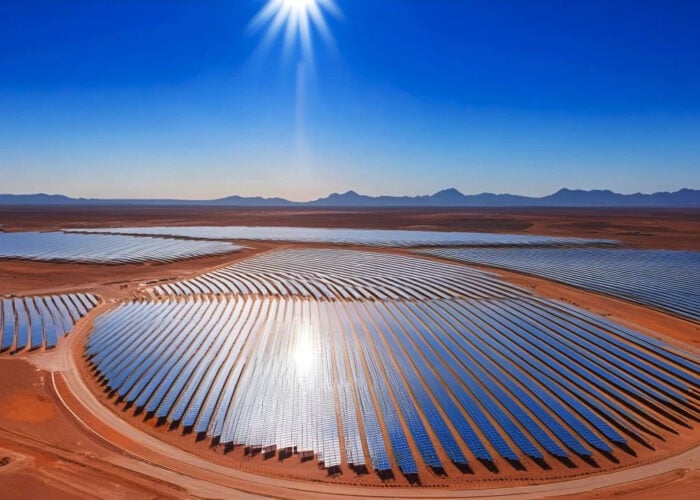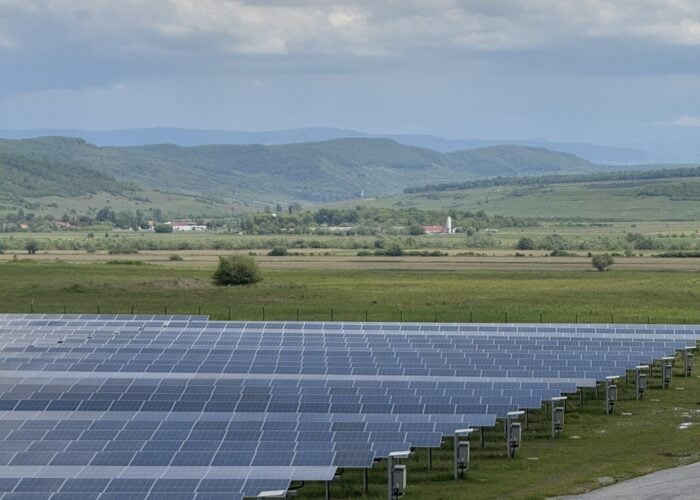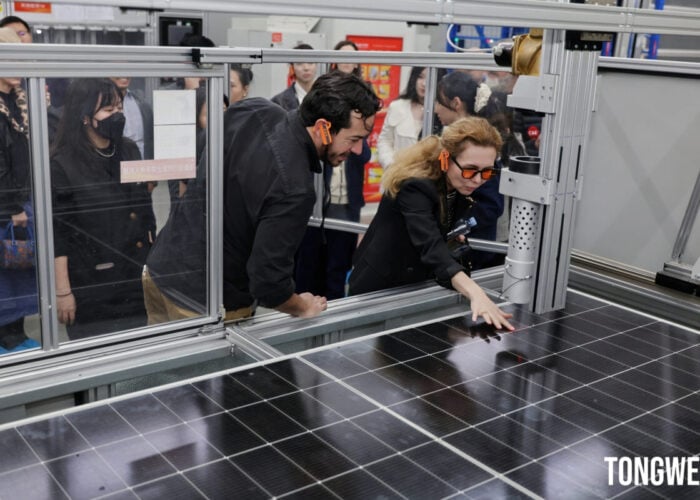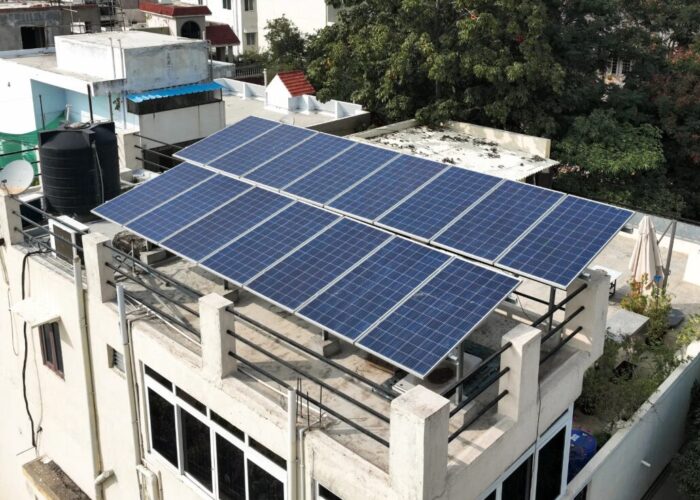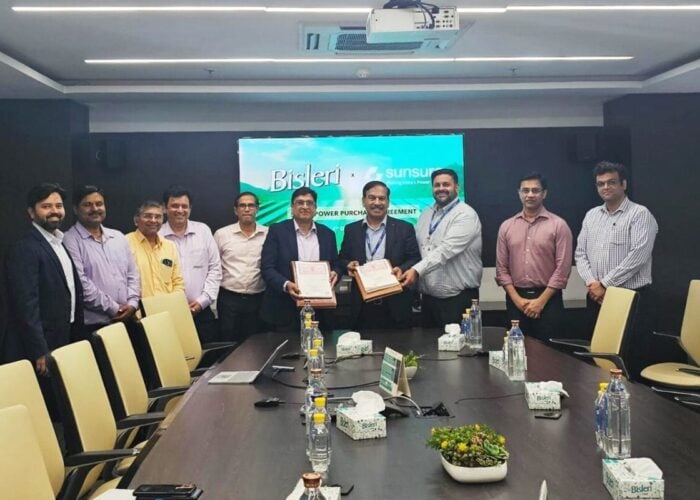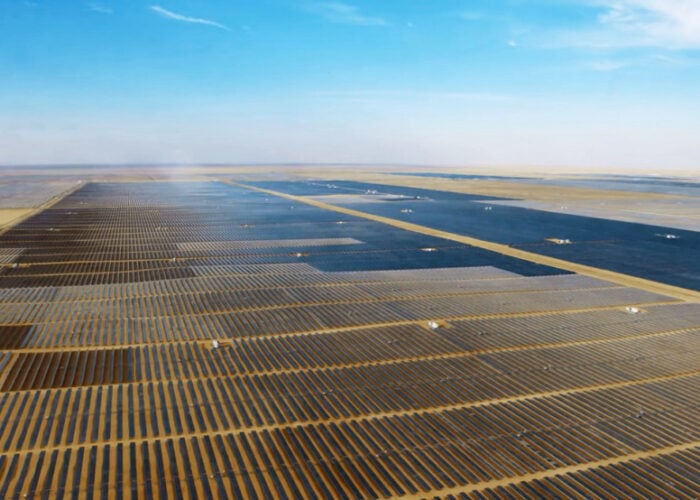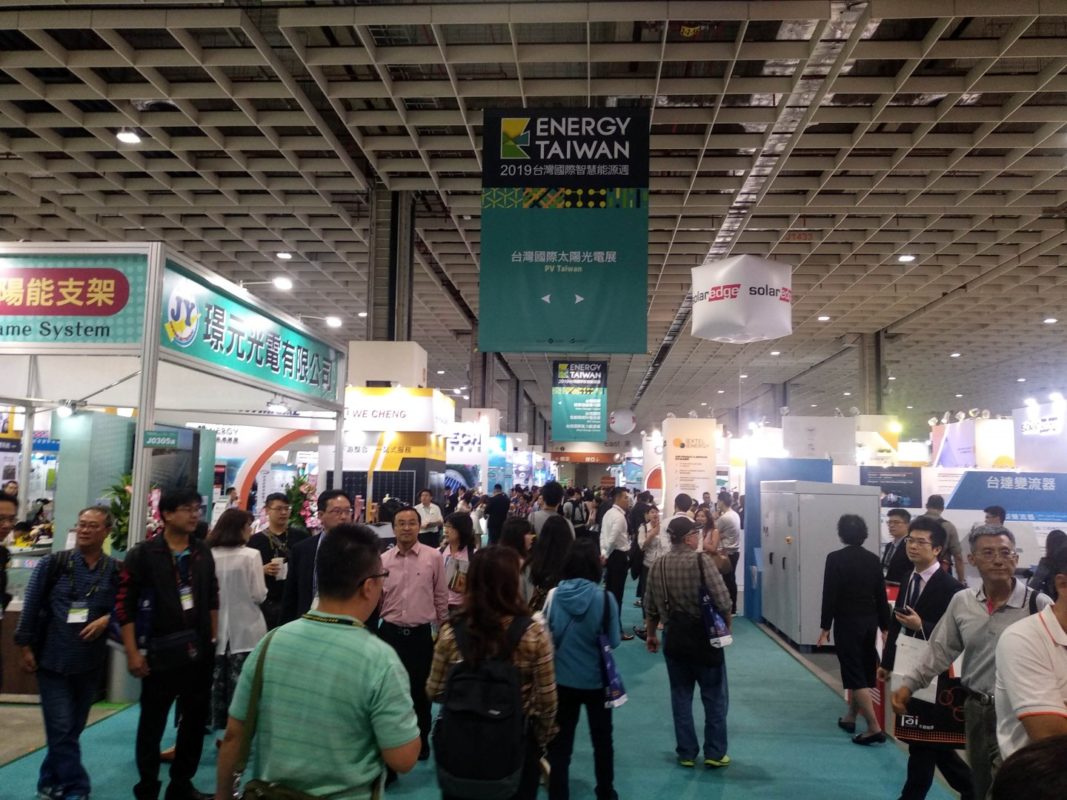
Taiwan’s government risks failing to make good on solar growth pledges unless it acts to clear structural hurdles such as land shortages, industry operators have warned at Energy Taiwan 2019.
The 20GW-by-2025 installed PV capacity target touted by top officials as they opened the Taipei conference on Wednesday dominated the talk in the hours that followed, becoming a recurring theme of conversations at exhibitor stands.
Try Premium for just $1
- Full premium access for the first month at only $1
- Converts to an annual rate after 30 days unless cancelled
- Cancel anytime during the trial period
Premium Benefits
- Expert industry analysis and interviews
- Digital access to PV Tech Power journal
- Exclusive event discounts
Or get the full Premium subscription right away
Or continue reading this article for free
Speaking to visiting reporters, various component manufacturers linked a rise in orders from Taiwanese downstream players to the solar goal, adopted in 2016. Frank Lu, vice chair of PV cabling and connector supplier KS Terminal, reported a jump in domestic customers.
AU Optronics (AUO) Corporation, formerly a pureplay PV maker but today also a developer, claimed to have seen benefits from the 20GW target on the upstream front – with domestic orders on the rise – but also the downstream. Ground-mounted growth will kick in in one or two years, he predicted.
Daniel Lee, special assistant at Taiwanese PV body TPVIA, told journalists the current government can be counted on to remain a solar champion. The upcoming decommissioning of Taiwan’s decades-old nuclear fleet has fuelled president Tsai Ing-wen’s interest in PV, he said.
According to Lee, political support will likely not waver whatever the outcome of next year’s presidential polls, set to pit reelection-seeking Ing-wen versus opposition hopeful Han Kuo-yu. The latter has yet to produce a manifesto but will likely not oppose the clean energy agenda, Lee said.
Short-term roll-out expectations dampen
Judging by the Energy Taiwan 2019 conference floor talk, however, the positive response to the 20GW-by-2025 target does not correlate with unwavering faith that it will be delivered within six years, as the government intends.
Views diverged between AUO’s Energy Business vice president SH Liao – who described the goal as “challenging but doable” – and Alan Lin, a director at energy and technology group TATUNG who works on corporate marketing and overseas business development.
“As of June this year, the total installed capacity is 3.4GW so you can see the gap with [the 2025 target]. Either the private sector gets more aggressive, or the government gives more incentives, or it will be difficult,” said Lin, speaking from his firm’s exhibitor stand.
Max Lin, a project manager at TATUNG’s solar unit TATUNG Forever Energy, responded with a “no” when asked whether Taiwan’s 20GW solar ambitions will materialise by 2025. Addressing land scarcity will require “more time”, said Lin as he walked reporters through his firm’s PV portfolio.
The government may plan to roll out 3.7GW of PV in 2020 but TPVIA’s Lee said his association expects instead 1GW next year, or 500-to-800MW based on more conservative forecasts. He admitted some operators wonder whether 20GW-by-2025 is attainable given these roll-out rates.
“Why not more? Based on my understanding, it’s not about policy nor feed-in tariffs, it’s about human nature,” he argued. “Frankly speaking, when investors come to me and say they're looking at a 10MW project my answer is – we'll need to speak to the landowner.”
Squeezing 20GW of PV into a jam-packed island
That Taiwan’s solar ambitions may be undone by a single conundrum – can a small, densely populated and topographically complex island find space for a 20GW solar power fleet – was a premise that loomed over much of the discussions with industry players.
The government, TPVIA’s Daniel Lee pointed out, is working to alleviate the shortage by releasing some of the land it owns. However, he added, the fact remains that the majority of sites are still in the hands of individuals PV developers must negotiate with.
Exactly how tricky the interaction can be was illustrated by a utility-scale PV project TATUNG Forever Energy is working on in the Tainan area. As Max Lin noted, the 130MW scheme cannot go ahead until all 30 landowners involved agree to sell, with only one-in-two swinging in favour so far.
According to Lin, his firm has filed “many applications” for the project but has yet to secure the go-ahead from the central government, even if local authorities have already given their green light. “We’ve put so much money, people on the ground,” Lin said. “This is a political issue.”
As several industry operators noted, land-deprived PV players might be wise to set their sights on different targets. Some mentioned contaminated farming land – typically easier to procure – while others pointed at, and claimed to be working on, floating solar projects.
From TATUNG’s 27.12MWp project to AUO’s 6MW venture, the operators going down the floating route are on the rise. “Where two years ago there weren’t many projects, today we think there is a market for [PV-powered} irrigation, but it will stil require regulatory change,” said Alan Lin.
Costs in the land of typhoons and low power prices
Another question doing the rounds at Energy Taiwan 2019 was whether the economic fundamentals are there for Taiwan to install over 16GW of solar within six years. According to TPVIA’s Lee, cost drops have already driven some in the country to rethink perceptions of PV as an expensive venture.
Despite this year’s feed-in tariff (FiT) cuts, solar projects still enjoy 20-year payments of around 13-15 dollar cents per kWh. The rates are even higher for small rooftop projects (18 dollar cents), floating plants (up to 16 cents) and enjoy a further 6% boost if plants use local, certified modules.
For solar ventures, a complication lies however in Taiwan’s low power prices, a circumstance some conference attendees attribute to government intervention. Change is afoot, however: Economic Affairs minister Shen Jong-Chin was quoted in March anticipating rises of up to 29% by 2025.
KS Terminal’s Frank Lu believes price hikes are indeed on the cards. “I think prices will rise very quickly,” he told reporters. “They have to, because they are too low. Government tried to interfere in the past because our income is not as high as other countries.”
Another of Taiwan’s trademark features – its exposure to severe earthquakes, typhoons and other natural hazards – can also hinder the economics of solar plays. According to Tatung’s Alan Lin, this is a factor that directly impacts firms’ work on the ground.
“In Taiwan we’ve got very good resources for renewables but also unpredictable conditions due to natural hazards, which raises costs,” he said. “When you do rooftops, for instance, they have to be subjected to thorough testing.”
This story is the second of a series exploring the key takeaways from the Energy Taiwan 2019 conference in Taipei on 16-18 October 2019, attended by PV Tech.
See here for a first article written as the event kicked off and here for a third article exploring the new plans by Taiwan's PV manufacturers to survive years of downturns.

